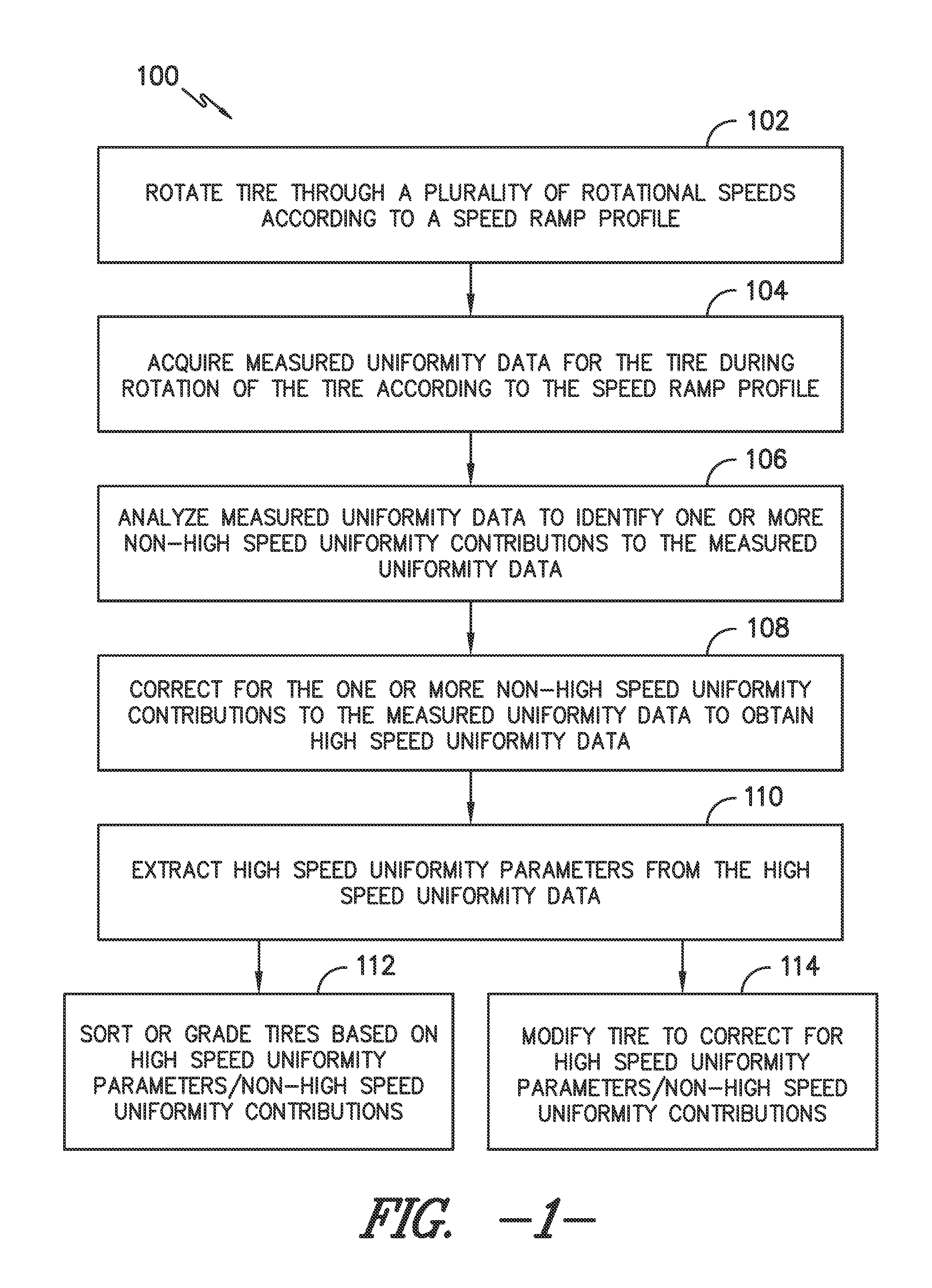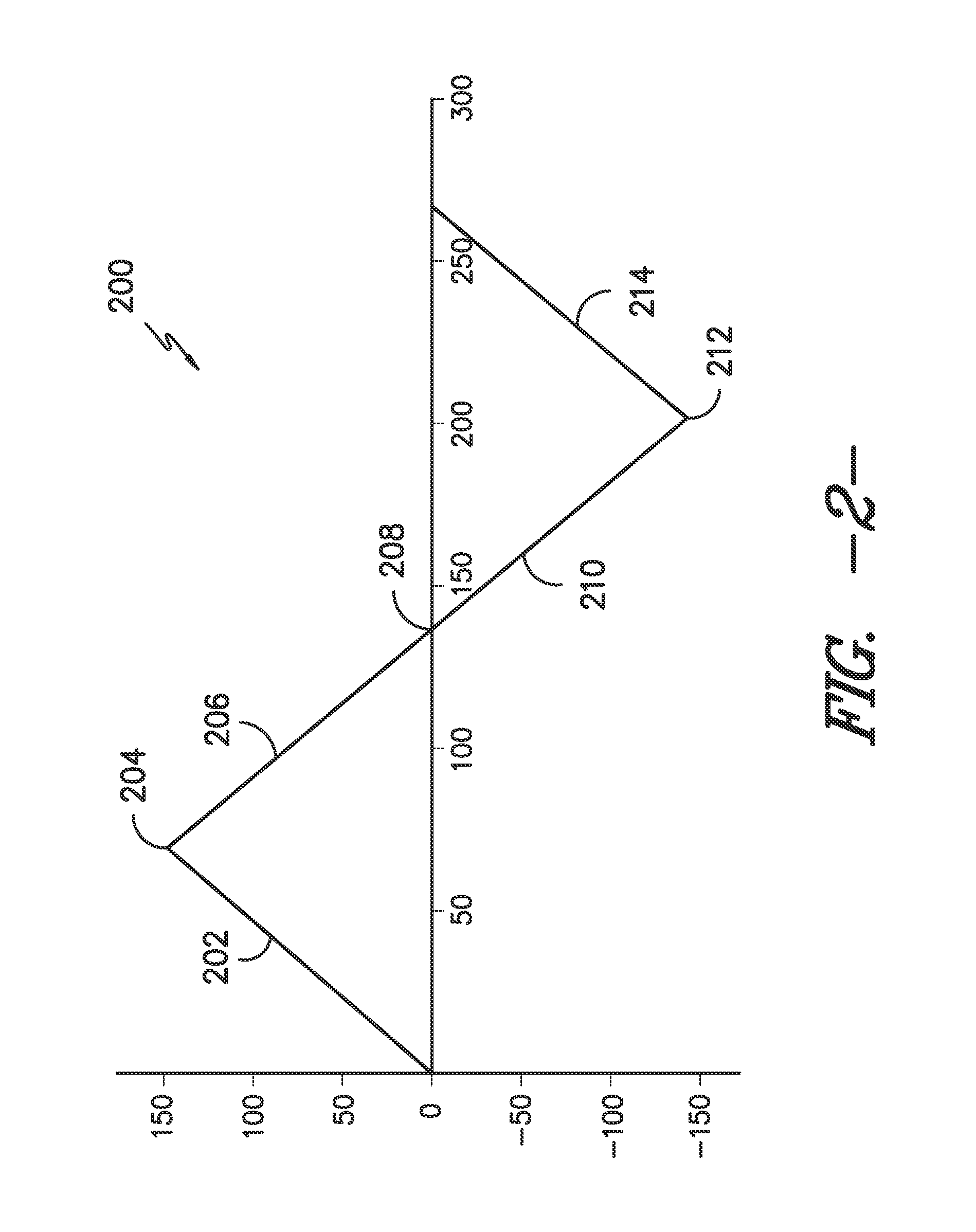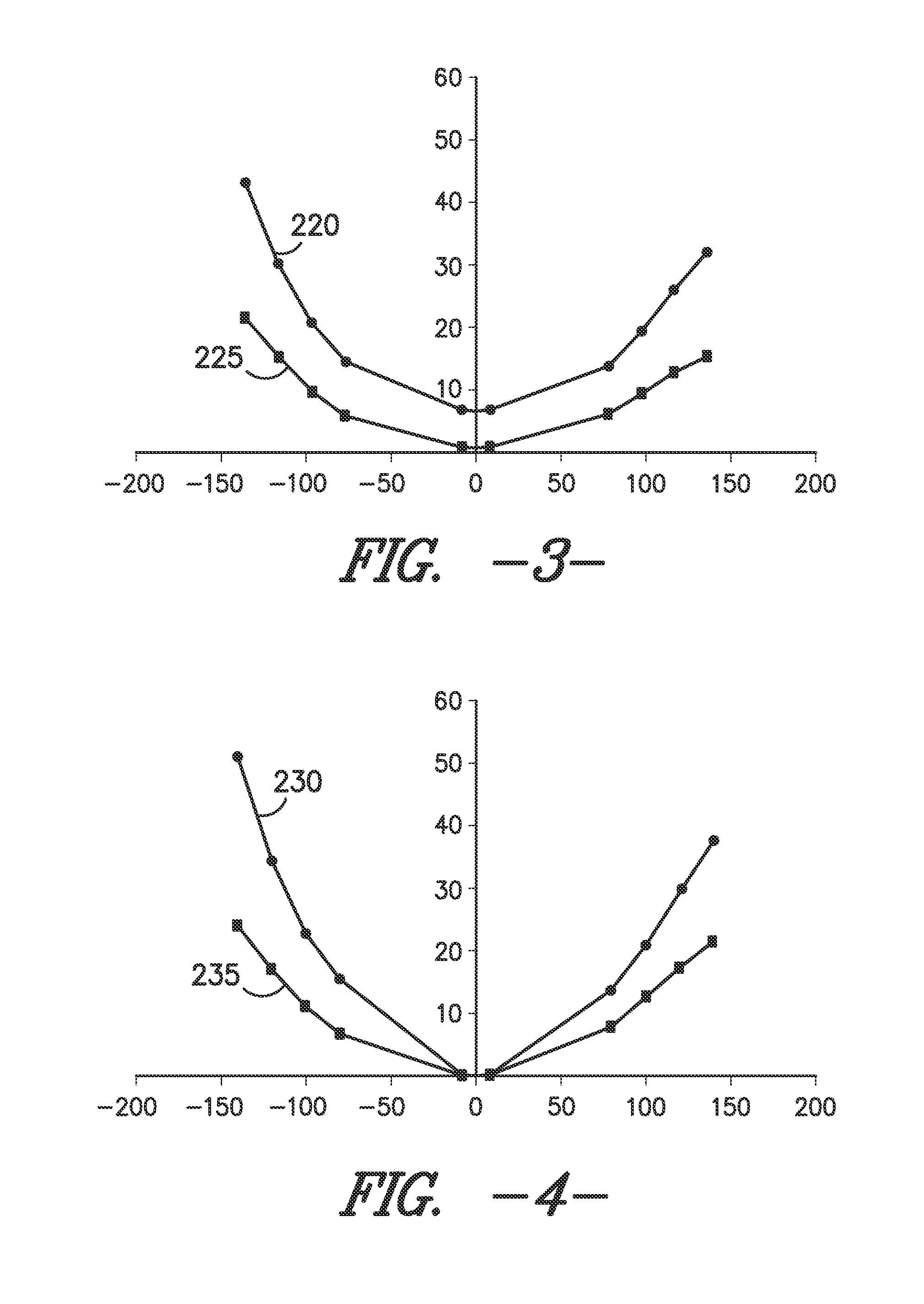Efficient high speed uniformity measurements using speed ramps
a high-speed uniformity and speed ramp technology, applied in the direction of static/dynamic balance measurement, instruments, roads, etc., can solve the problems of tire non-uniformities that produce periodic-varying forces, tire non-uniformities are important, and the mass variance measurement is typically limited to mass unbalan
- Summary
- Abstract
- Description
- Claims
- Application Information
AI Technical Summary
Benefits of technology
Problems solved by technology
Method used
Image
Examples
example regression
Analyses
[0071]To better appreciate the advantages of determining high speed uniformity parameters according to exemplary embodiments of the present disclosure, example identification of high speed uniformity data by correcting for non-high speed uniformity contributions to measured uniformity data will now be set forth. In particular, measured uniformity data, such as measured rolling force variation data (e.g. RFV data, LFV data, and / or TFV data) can be continuously acquired while the tire is rotated according to a speed ramp profile, such as the speed ramp profile 200 of FIG. 2. The measured uniformity data can be analyzed in accordance with the examples below to correct for one or more non-high speed uniformity contributions to the measured uniformity data. Example #1 identifies and corrects for road wheel contribution to the measured uniformity data. Example #2 identifies and corrects for road wheel contribution and mass unbalance contribution to the measured uniformity data. Ex...
example # 1
Example #1
[0072]The road wheel contribution to measured uniformity data is identified using a regression analysis and is removed from the measured uniformity data. In particular, the measured uniformity data can be modeled as a sum of a road wheel term and a high speed uniformity term according to the following mathematical model:
mHSUi=∑p=1m∑i=1countapcos(pTirediaRWdia(i-1)2πcount)+bpsin(pTirediaRWdia(i-1)2πcount)+ɛi
mHSUi is the measured uniformity data. p is the process harmonic to be measured for the road wheel contribution. The mathematical model can model process harmonics 1 through m for the road wheel contribution. count is the number of uniformity measurements taken in a given rotation of the tire. In one example, count can be equal to 1024. ap and bp are coefficients associated with the road wheel term. εi is a residual term and can be the high speed uniformity term.
[0073]The ratio
TirediaRWdia
provides a ratio of the tire diameter to the road wheel diameter. The ratio
TirediaR...
example # 2
Example #2
[0075]The road wheel contribution and the mass unbalance contribution to measured uniformity data is identified using a regression analysis and is removed from the measured uniformity data. In particular, the measured uniformity data can be modeled as a sum of a road wheel term, a mass unbalance term, and a high speed uniformity term according to the following mathematical model:
mHSUi=∑p=1m∑i=1countapcos(pTirediaRWdia(i-1)2πcount)+bpsin(pTirediaRWdia(i-1)2πcount)+ω2∑i=1countc1cos(1(i-1)2πcount)+d1sin(1(i-1)2πcount)+ɛi
mHSUi is the measured uniformity data. p is the process harmonic to be measured for the road wheel contribution. The mathematical model can model process harmonics 1 through m for the road wheel contribution. count is the number of uniformity measurements taken in a given rotation of the tire. In one example, count can be equal to 1024. ap and bp are coefficients associated with the road wheel term. ω is the rotational speed of the tire. c1 and d1 are coeffici...
PUM
| Property | Measurement | Unit |
|---|---|---|
| speed | aaaaa | aaaaa |
| rotational speeds | aaaaa | aaaaa |
| rotational speed | aaaaa | aaaaa |
Abstract
Description
Claims
Application Information
 Login to View More
Login to View More - R&D
- Intellectual Property
- Life Sciences
- Materials
- Tech Scout
- Unparalleled Data Quality
- Higher Quality Content
- 60% Fewer Hallucinations
Browse by: Latest US Patents, China's latest patents, Technical Efficacy Thesaurus, Application Domain, Technology Topic, Popular Technical Reports.
© 2025 PatSnap. All rights reserved.Legal|Privacy policy|Modern Slavery Act Transparency Statement|Sitemap|About US| Contact US: help@patsnap.com



